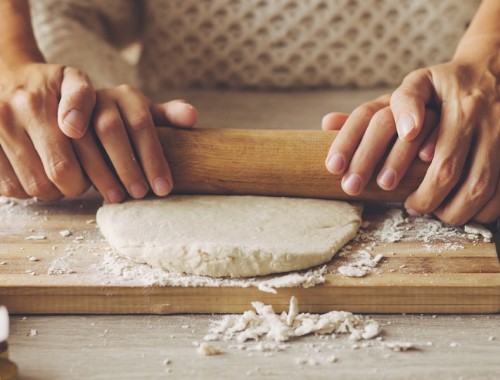Transition is the last phase of the first stage of labour. This is usually the shortest and the most intense part of labour. What’s happening?
What’s happening?
- The baby descends farther into the pelvis, with the top of the baby’s head becoming even with the ischial spines
- The baby’s descent puts pressure on your rectal area
- The cervix completes dilating
- Every contraction makes a difference
- Four to five contractions come in ten minutes, with each contraction lasting 70-90 seconds
- The bags of water often break during or at the end of this phase
- Your body is working very efficiently and with tremendous effort during each contraction
- The contractions reach their maximum intensity at the beginning of this phase
Physically, you may feel some or all of these:
- Rectal pressure, like needing to have a bowel movement
- Nauseated
- A need to throw up
- A need to hiccup or burp
- Hot and sweaty
- A slight increase in vaginal bleeding
- Shaky legs
- A “catch” in your breathing or feel a “catch” in your throat
- A need to give little pushes
Emotionally, you may feel some or all of these:
- Totally focused during each contraction
- A need for help to stay focused during contractions
- Very quiet and inward
- Overwhelmed and need to cry and shout
- A need to have your support person very close to you during contractions
- A need for privacy
- Relieved to know this is the last phase of the first stage of labour
What to do to help yourself
- Remember this is the shortest part of labour
- Have continuous support from your partner
- Completely concentrate with each contraction
- Continue to take the contractions one at a time
- Use slow, deep breathing
- Breathe with your partner to keep a rhythm
- Focus on your ritual, including vocalizating, for each contraction
- Use light breathing at the peak of a contraction if needed
- Move your hips or your body during the contraction, such as swaying your hips, rocking, bouncing on the exercise ball
- Concentrate on a focal point during a contraction
- Imagine the cervix stretching the last bit over your baby’s head
- Change positions (with help from your partner)
- Relax in the bath or shower
- Relax between contractions
- Drink, especially water
- Empty your bladder every 1-2 hours
- Have cold packs placed on your back
- Have cool cloths placed on your forehead and/or neck
- Continue to your use your TENS
- Listen to music
How the labour partner can help
- Be very close to her during contractions
- Help her continue her ritual
- Encourage her to vocalize
- Get something for her to drink
- Help her to change position
- Remind her to sway her hips during contractions if at all possible
- Help her to relax with firm massage (back, hands, feet, head, shoulders)
- Change the lighting to help her feel more privacy
- Remind her to go to the bathroom every 1-2 hours
- Pour a bath for her and help her in and out
- Put cold compresses on her lower back, neck and face
- Remind her how close she is to the end
- Breathe with her
- Massage the tops of her legs if they are shaking
Prepared by: Childbirth Education Curriculum Project Ad Hoc Committee
Approved by: BC Women’s Family Education Advisory Committe




[…] also our articles on transition and stripping […]